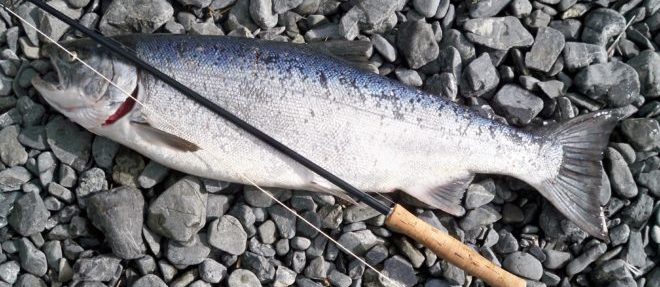Originally published in Business Insider
By Mitch Zuklie
The best book on management to come out in the past year has nothing to do with management. It’s about fish — salmon, to be precise. More importantly, it’s about “strongholds,” the simple idea that protecting what’s intact and thriving is essential to sustaining success.
I believe a stronghold strategy is something every leader ought to incorporate into their vision for their company’s future.
“Stronghold: One Man’s Quest to Save the World’s Wild Salmon” is the biography of Guido Rahr, one of the world’s greatest fly fishermen and conservationists. Rahr is a friend of mine and the Chairman and CEO of The Wild Salmon Center, a nonprofit on whose board I sit.
He also has the makings of a management genius, though I doubt he would ever think of himself that way. Because what’s true for Pacific salmon populations is also true for both growing and established companies.
Rahr first honed his insights about strongholds in his college thesis at Yale, after discovering the work of one of America’s pioneering 19th century fish conservationists. Even in the late 1800s, the Atlantic salmon rivers of the eastern seaboard were largely too polluted and industrialized to support the native species. So rather than fix what was already broken, the US’s first fish conservationist focused on western salmon rivers that had yet to be spoiled. Strongholds, in other words.
For threatened salmon habitats, Rahr adopted this strategy of saving and fortifying what was still right and intact, reasoning that the costs of preservation were far lower (and the odds of success far higher) than trying to repair what was already lost. That strategy has since led Rahr to his life’s mission of working to preserve the salmon-rich river systems of the American northwest, along with habitats in British Columbia, Alaska, and Russia’s Kamchatka peninsula.
I see the wisdom of the stronghold strategy in my own, less distinguished, fly-fishing pursuits. We’ve spent billions trying to bolster the habitats of California’s Sacramento River, but we’ve struggled to restore the ecosystem. I also see a stronghold imperative in the effort to prevent the construction of a massive open-pit mine at the edge of Alaska’s Bristol Bay, which could gravely endanger America’s largest natural salmon run.
The stronghold has become one of my guiding philosophies in leading my firm, and it’s also the foundation for the advice I often give entrepreneurs.
What does a stronghold strategy suggest for business? For one, that it’s far better to retain top talent than to recruit their replacements. Talent identification is incredibly hard — especially when it comes to assessing cultural fit. Yet understanding how to motivate and inspire your existing team often takes only a few conversations.
When it comes to a growth strategy, it’s often better to invest strength in strength, rather than to divert resources into new and uncharted territory. Know your path in the ecosystem and run it as powerfully as you can. That is the key to scale.
It can also be far more effective and rewarding to invest in existing customer relationships than to pursue new ones. Customer acquisition is risky and expensive, as is brand building. Focusing on delighting existing customers ensures that they’ll be your own best promoters.
A stronghold strategy begins with asking about the healthiest elements of your business ecosystem and how you can protect and fortify them. Most business turnarounds begin with “re-embracing our core values” or “getting back to what we do best.” Why wait until a turnaround is needed?
This isn’t to say don’t innovate. Rather, consider how you can innovate to reinforce your strongholds instead. How can you stay competitive in the areas where you are strongest? To cement relationships with existing clients? To do what you do best, only better?
As we all work to keep up with the pace of innovation, it may be that the most disruptive act is to stay the course. Take your strongholds and make them stronger.
The problem in actually adopting the stronghold strategy is rooted deep in our psychology. As humans we respond more favorably to fixing things that are broken, rather than appreciating, maintaining, and refining what already works. There’s nothing sexy about prevention, even if incremental improvements are far more economically efficient.
That’s the challenge Guido Rahr has to overcome in his quest to preserve the Pacific salmon ecosystem. And I’d argue that’s the same challenge we all face at our companies.
Mitch Zuklie is CEO of Orrick.

